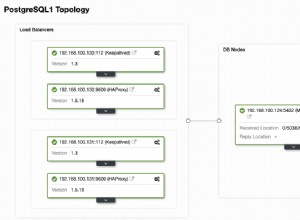Jawaban ini untuk hashing, password_hash() , dan password_verify() . Untuk mysqli dan pdo. Tautan di bawah memiliki tautan lebih lanjut dan beberapa bahasa tentang garam dan sejenisnya.
Sangat penting untuk tidak menggunakan data yang disediakan pengguna secara langsung dengan pilihan dan sisipan. Sebaliknya, ikat parameter dan panggil pernyataan yang sudah disiapkan ke Hindari serangan injeksi sql . Password tidak boleh disimpan secara clear (cleartext) di database. Sebaliknya, mereka harus dikirim melalui hash satu arah.
Juga mencatat. Ini menunjukkan hashing pendaftaran dan verifikasi login. Ini tidak sepenuhnya meledak fungsionalitas Saya mencoba memasang codecanyon untuk sepuluh dolar ... sedemikian rupa sehingga menunjukkan pendaftaran ulang alamat email (login) sudah ada, apakah pembaruan, ingatlah. Dalam hal ini, penyisipan akan gagal karena kunci unik yang ditempatkan di db. Saya serahkan kepada Anda, pembaca, untuk melakukan pencarian, dan mengatakan 'email sudah terdaftar.'
Skema
CREATE TABLE `user_accounts2` (
`id` int(11) NOT NULL AUTO_INCREMENT,
`email` varchar(100) NOT NULL,
`password` varchar(255) NOT NULL,
PRIMARY KEY (`id`),
unique key(email) -- that better be the case
) ENGINE=InnoDB;
Setelah dijalankan melalui register.php dan menyimpan pengguna, datanya mungkin terlihat seperti ini:
select * from user_accounts2;
+----+-----------+--------------------------------------------------------------+
| id | email | password |
+----+-----------+--------------------------------------------------------------+
| 1 | [email protected] | $2y$10$U6.WR.tiOIYNGDWddfT7kevJU8uiz8KAkdxXpda9e1xuplhC/eTJS |
+----+-----------+--------------------------------------------------------------+
bagian mysqli terlebih dahulu
daftar.php
<?php
mysqli_report(MYSQLI_REPORT_ALL);
error_reporting(E_ALL); // report all PHP errors
ini_set("display_errors", 1); // display them
session_start();
if(isset($_SESSION['userid'])!="") {
// you are already logged in as session has been set
header("Location: safe.php"); // note that this re-direct will at the top of that page
// ... and there to verify the session state so no tricks can be performed
// no tricks and gimmicks
}
if(isset($_POST['register'])) {
$email = $_POST['email'];
$ctPassword = $_POST['password']; // cleartext password from user
$hp=password_hash($ctPassword,PASSWORD_DEFAULT); // hashed password using cleartext one
// pretend the following is locked in a vault and loaded but hard coded here
$host="yourhostname";
$dbname="dbname";
$user="dbuser";
$pwd="password";
$port=3306; // comes along for the ride so I don't need to look up param order below
// end pretend
try {
$mysqli= new mysqli($host, $user, $pwd, $dbname,$port);
if ($mysqli->connect_error) {
die('Connect Error (' . $mysqli->connect_errno . ') ' . $mysqli->connect_error);
}
//echo "I am connected and feel happy.<br/>";
$query = "INSERT INTO user_accounts2(email,password) VALUES (?,?)";
$stmt = $mysqli->prepare($query);
// note the 2 s's below, s is for string
$stmt->bind_param("ss", $email,$hp); // never ever use non-sanitized user supplied data. Bind it
$stmt->execute();
// password is saved as hashed, will be verified on login page with password_verify()
$iLastInsertId=$mysqli->insert_id; // do something special with this (or not)
// redirect to some login page (for now you just sit here)
$stmt->close();
$mysqli->close();
} catch (mysqli_sql_exception $e) {
throw $e;
}
}
?>
<html>
<head>
<title>Register new user</title>
</head>
<body>
<div id="reg-form">
<form method="post">
<table>
<tr>
<td><input type="email" name="email" placeholder="Email" required /></td>
</tr>
<tr>
<td><input type="password" name="password" placeholder="Password" required /></td>
</tr>
<tr>
<td><button type="submit" name="register">Register</button></td>
</tr>
<tr>
<td><a href="index.php">Normal Login In Here</a></td>
</tr>
</table>
</form>
</div>
</body>
</html>
login.php
<?php
mysqli_report(MYSQLI_REPORT_ALL);
error_reporting(E_ALL); // report all PHP errors
ini_set("display_errors", 1); // display them
session_start();
if(isset($_SESSION['userid'])!="") {
// you are already logged in as session has been set
header("Location: safe.php"); // note that this re-direct will at the top of that page
// ... and there to verify the session state so no tricks can be performed
// no tricks and gimmicks
}
if(isset($_POST['login'])) {
$email = $_POST['email'];
$ctPassword = $_POST['password']; // cleartext password from user
// pretend the following is locked in a vault and loaded but hard coded here
$host="yourhostname";
$dbname="dbname";
$user="dbuser";
$pwd="password";
$port=3306; // comes along for the ride so I don't need to look up param order below
// end pretend
try {
$mysqli= new mysqli($host, $user, $pwd, $dbname,$port);
if ($mysqli->connect_error) {
die('Connect Error (' . $mysqli->connect_errno . ') ' . $mysqli->connect_error);
}
//echo "I am connected and feel happy.<br/>";
$query = "select id,email,password from user_accounts2 where email=?";
$stmt = $mysqli->prepare($query);
// note the "s" below, s is for string
$stmt->bind_param("s", $email); // never ever use non-sanitized user supplied data. Bind it
$stmt->execute();
$result = $stmt->get_result();
if ($row = $result->fetch_array(MYSQLI_ASSOC)) {
$dbHashedPassword=$row['password'];
if (password_verify($ctPassword,$dbHashedPassword)) {
echo "right, userid=";
$_SESSION['userid']=$row['id'];
echo $_SESSION['userid'];
// redirect to safe.php (note safeguards verbiage at top of this file about it)
}
else {
echo "wrong";
// could be overkill here, but in logout.php
// clear the $_SESSION['userid']
}
}
else {
echo 'no such record';
}
// remember, there is no iterating through rows, since there is 1 or 0 (email has a unique key)
// also, hashes are one-way functions in the db. Once you hash and do the insert
// there is pretty much no coming back to cleartext from the db with it. you just VERIFY it
$stmt->close();
$mysqli->close();
} catch (mysqli_sql_exception $e) {
throw $e;
}
}
?>
<html>
<head>
<title>Login</title>
</head>
<body>
<div id="reg-form">
<form method="post">
<table>
<tr>
<td><input type="email" name="email" placeholder="Email" required /></td>
</tr>
<tr>
<td><input type="password" name="password" placeholder="Password" required /></td>
</tr>
<tr>
<td><button type="submit" name="login">Login</button></td>
</tr>
</table>
</form>
</div>
</body>
</html>
bagian pdo di bawah
Ketika saya punya waktu, mungkin besok, tetapi untuk saat ini saya mengarahkan Anda ke Jawaban saya .




